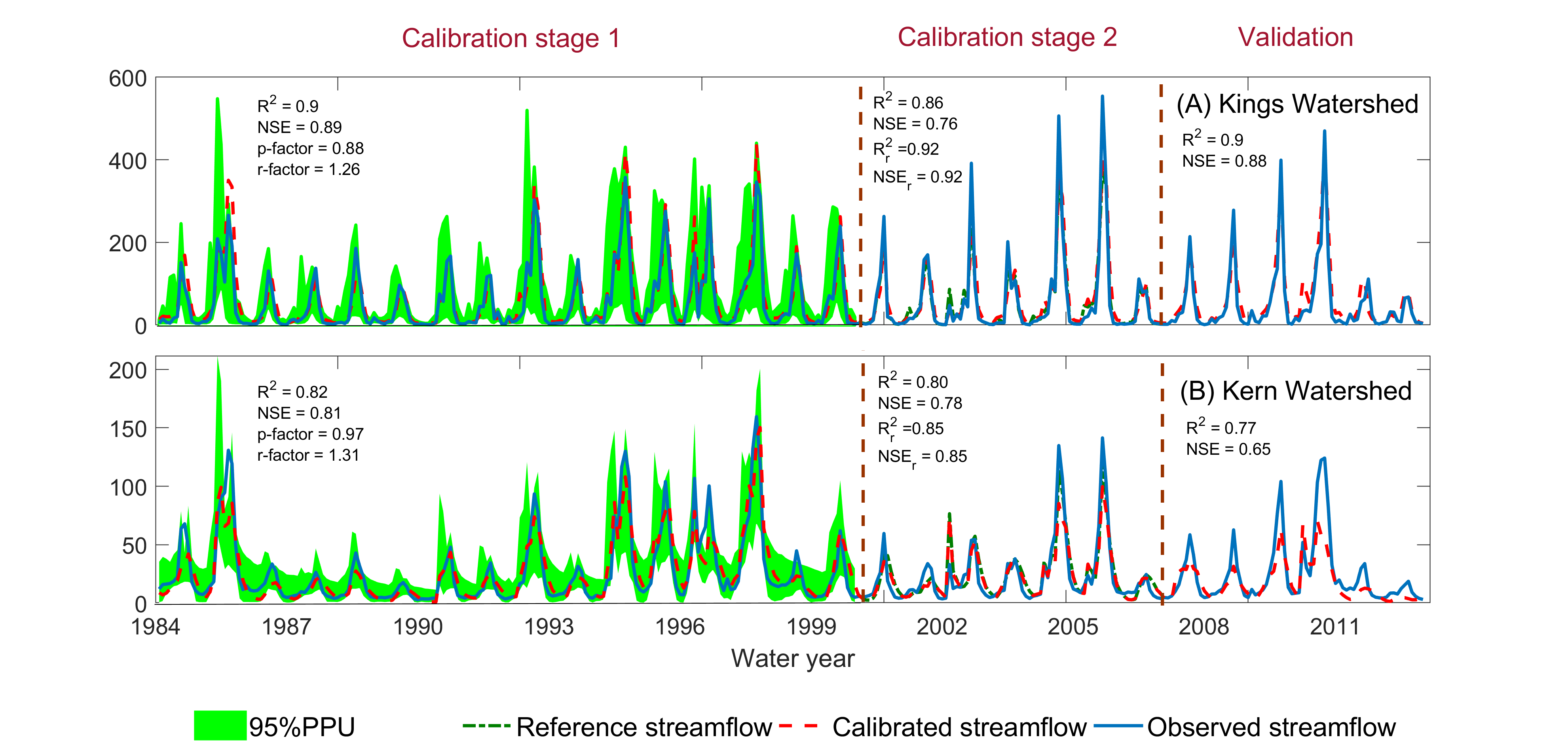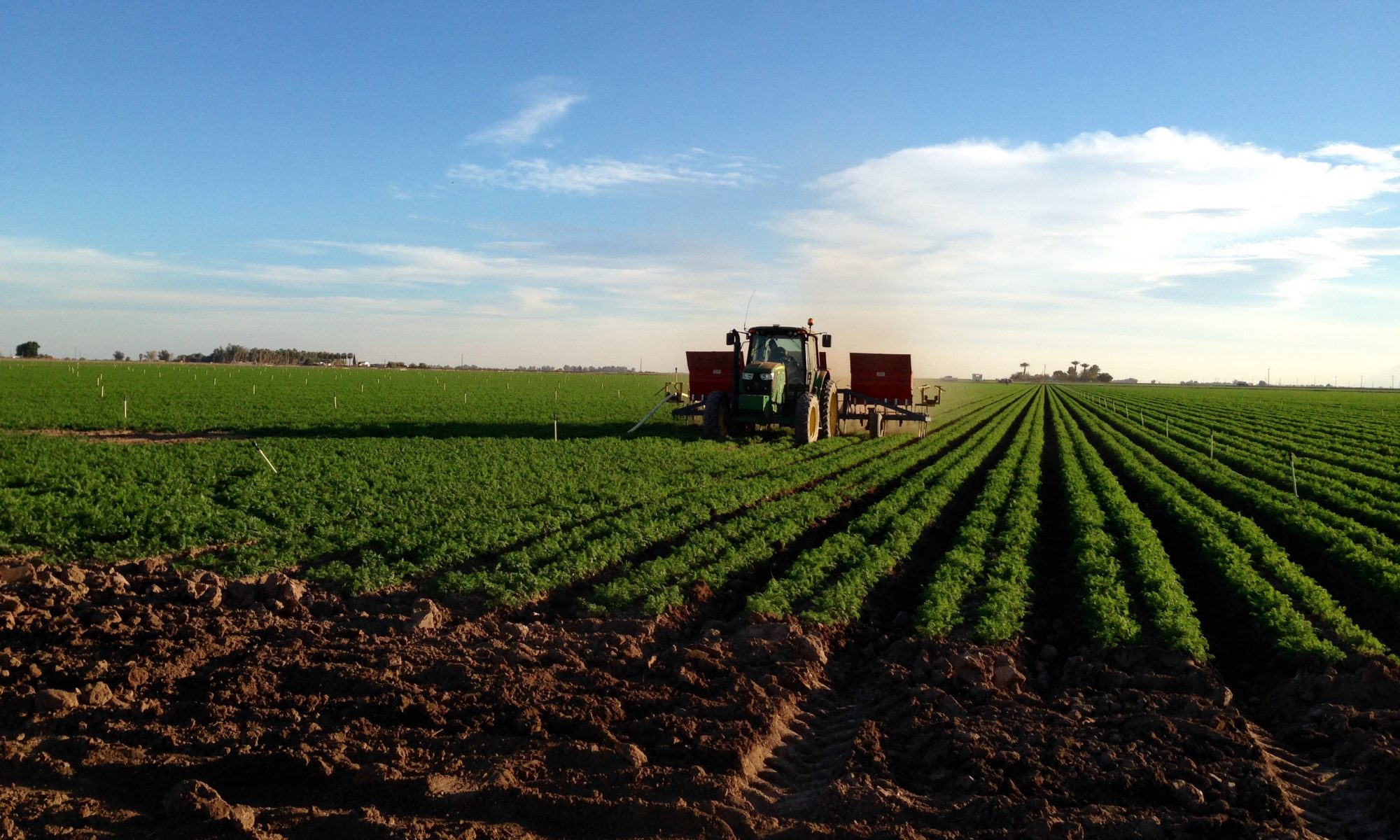Biophysical Modeling
We are using the Soil Water Assessment Tool (SWAT) to assess future changes in natural streamflow and surface water availability for the four major Sierra Nevada tributaries entering the Tulare Lake basin (Kings, Kaweah, Tule and Kern rivers). We are simulating the effect of future projections of air temperature and precipitation change in these watersheds using the 4 priority models (HadGEM2-ES, CNRM-CM5, CanESM2, MIROC5) selected by California’s Climate Action Team Research Working Group and two RCP (Representative Concentration Pathway; RCP4.5 and RCP 8.5) scenarios. Results from these models will be used to assess alternative water management policies such as reservoir re-operation for conjunctive use and groundwater recharge near disadvantaged communities.

Land use change and economic modeling
We have compiled crop data for the Tulare Lake Basin from the California pesticide reporting database (CalPUR) for the period 1979-2016 to quantify the historical shift from field crops to perennial crops in a spatially distributed manner. The data is also used to identify regions of the Tulare Basin prone to water “demand hardening” due to the expansion of perennial crops, in which water demand cannot be reduced without significant economic costs. The expansion of high-water intensity crops has significant implications for groundwater supply in disadvantaged communities.

Model integration through stakeholder engagement
To effectively build models that integrate ground and surface water supplies with land use and socioeconomic information, we are engaged in a participatory modeling process with stakeholders. These groups include:
1) Vulnerable populations– communities that are highly vulnerable to unexpected shortages in surface water supply; these include California-designated disadvantaged communities, unincorporated communities and non-English speaking households.
2) Policy makers and water managers- members from regional water districts, representatives of Groundwater Sustainability Agencies, policy makers and academics.
3) Farmers and the Representatives of the Agricultural Industry- both large-scale industrial groups and small landowners, many of whom face difficult trade-offs between economic benefits and water security.
We are engaging with these three groups through focus groups and workshops to include their perspectives on drought resilience, develop adaptation strategies, and test them using an integrated model that reflects stakeholder preferences.This ensures valuable feedback will be integrated into the hydrological water models.

To provide context, we are currently building a literature review on the most pertinent academic studies related to these groups’ involvement in water management and hydrological modeling. We are also tracking current events and legislative developments in the rapidly-evolving field of California water management, policy, legislation and environmental justice. Finally, a content analysis is being conducted to determine the current tensions between policymakers, farmers and DACs over Groundwater Sustainability Plan formation and other policy related issue affecting groundwater in the area.
The goal of this work is to improve decision making, communication and prioritization of areas for groundwater recharge within the Tulare Lake Basin. More broadly, we aim to contribute to state-wide goals of sustainably supplying water, ensuring economic productivity in agricultural areas and helping improve community robustness and resilience in the face of climate change.
